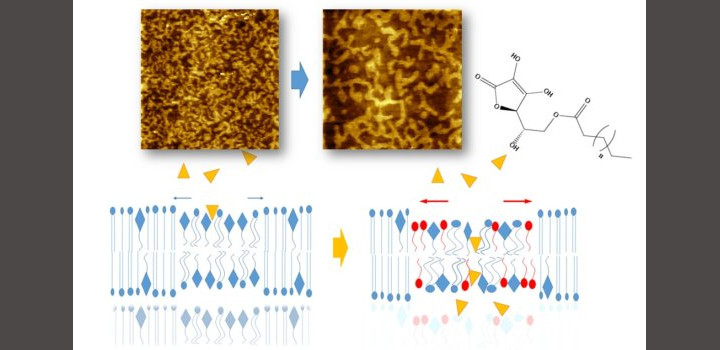Zulueta Y. et al. Colloids Surf B Biointerfaces. 2020
L-ascorbic acid alkyl esters (ASCn) are lipophilic forms of vitamin C, which act as skin permeation enhancers. We investigated the physical changes induced by incorporating ASCn into stratum corneum (SC) lipid membranes and correlated this with the mechanism proposed in the literature for skin permeation enhancement phenomena. We used lipid monolayers to explore the 2D structure and elasticity of the lipid-enhancer systems. As a comparison, the classic permeation enhancer, oleic acid (OA) and the non-enhancer analogue stearic acid (SA) were analysed. The incorporation of ASCn or OA into SC membranes resulted in more liquid-like films, with a dose-dependent lowering of the compressibility modulus. Brewster angle microscopy (BAM) evidenced partial miscibility of the enhancer with SC lipid components, stabilising the liquid-expanded phase. At the nanoscale, AFM showed that SC lipids form heterogeneous membranes, which underwent structural alterations after incorporating ASCn and fatty acids, such as SA and OA. The lower, cholesterol-enriched phase appears to concentrate the enhancers, whilst the higher ceramide-enriched phase concentrated the non-enhancer SA. Our results and previously reported pieces of evidence indicate a strong pattern in which the rheological properties of SC lipid films are determinant for skin permeation phenomena.
Autores: Zulueta Díaz YLM, Menghi K, Guerrero ML, Nocelli N, Fanani ML



